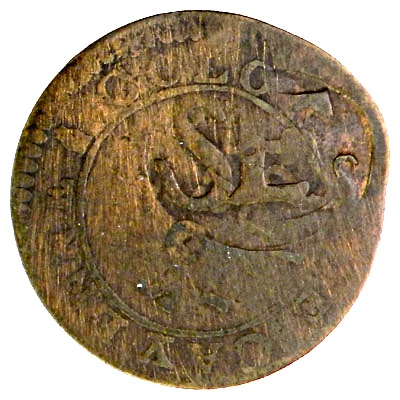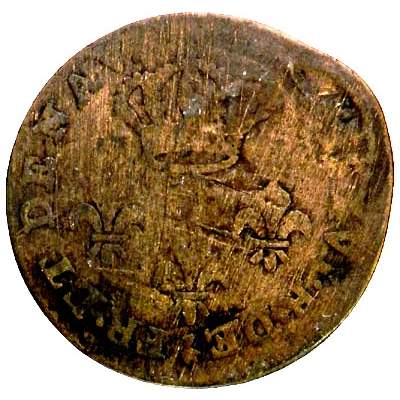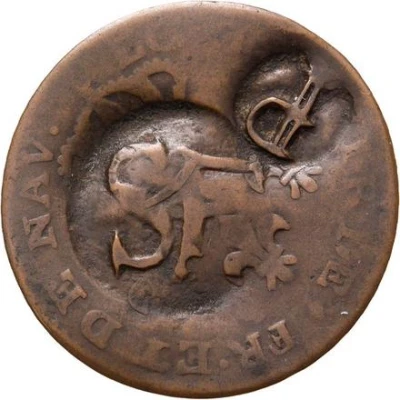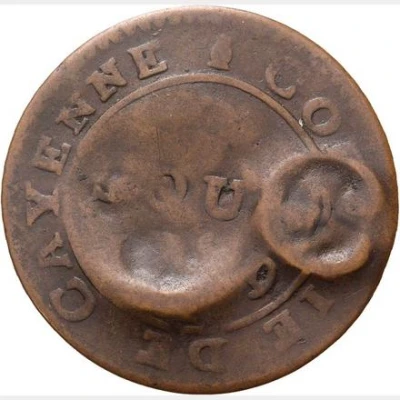


© Stephen Album Rare Coins
1 Stuiver "Cayenne-stuiver" Countermark S.Es and C13 ND
| Billon | 1.8 g | 23 mm |
| Issuer | Saint Eustatius (Netherlands Antilles) |
|---|---|
| Type | Standard circulation coin |
| Years | 1809-1812 |
| Value | 1 Stuiver |
| Composition | Billon |
| Weight | 1.8 g |
| Diameter | 23 mm |
| Shape | Round |
| Technique | Milled, Countermarked |
| Demonetized | Yes |
| Updated | 2024-10-06 |
| Numista | N#156901 |
|---|---|
| Rarity index | 100% |
Reverse
Worn reverse of host coin with countermark in excuse
Script: Latin
Comment
The 'cayenne stuiver' was a 2 sous coin minted in the West Indies (Colonie de Cayenne) by the French government, that was used on a lot of non-French islands in the region (including Saint Martin, Saint Bartholomew etc) as well.According to Publication 15-12-1797 the 'Cayenne Stuivers' and similar coins, were countermarked with the letters 'SE'. Smith Pierre dit Flamand was sworn in to make the stamps. On 23-1-1798 a new publication warned for counterfeits and stating that only the old marked, old plain, old Danish and Dutch Stuivers remained of value. Later, in 1809, these coins were marked again, this time with a 'P'.
Interesting fact
The "Cayenne-stuiver" coin from Saint Eustatius (Netherlands Antilles) is interesting because it was used as a form of currency in the early 19th century, despite being countermarked with the letters "S.Es" and "C13," which indicates that it was not officially issued by the Dutch government. This suggests that the coin may have been used in a non-official capacity, possibly in local trade or commerce. Additionally, the fact that it is made of billon, a copper and silver alloy, and weighs only 1.8 grams, highlights the resourcefulness and adaptability of the people of Saint Eustatius in using available materials to create a functional currency.

